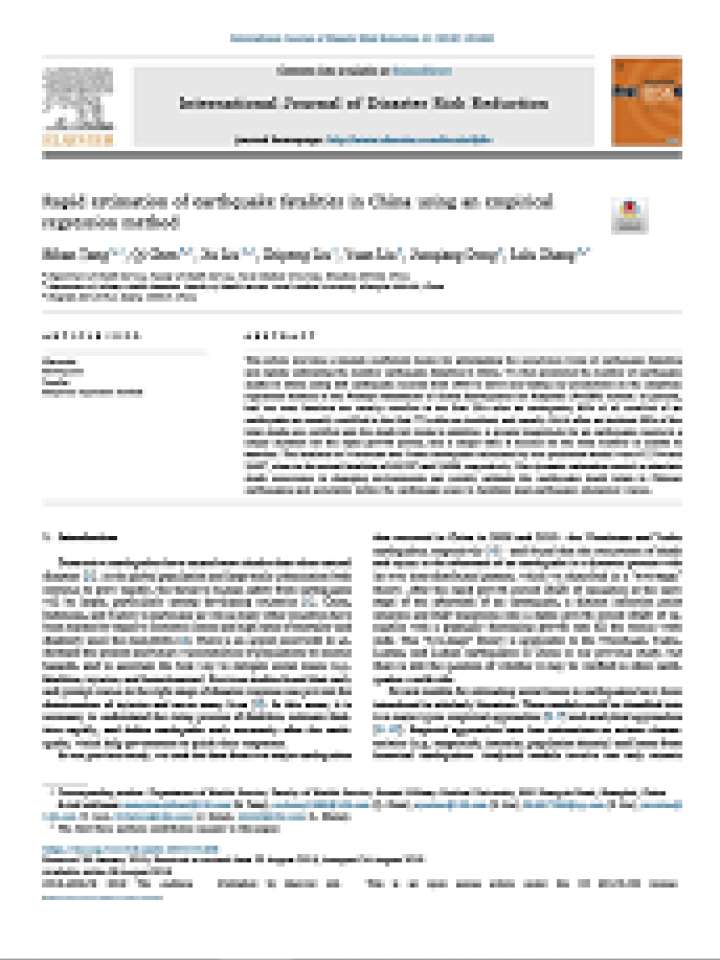Rapid estimation of earthquake fatalities in China using an empirical regression method
This paper provides a random coefficient model for anticipating the occurrence trend of earthquake fatalities and rapidly estimating the number earthquake fatalities in China. The number of earthquake deaths in China were predicted using 206 earthquake records from 1900 to 2016 and basing our predictions on the empirical regression method in the Prompt Assessment of Global Earthquakes for Response (PAGER) system. In general, half the total fatalities are usually certified in the first 23 h after an earthquake; 80% of all certified of an earthquake are usually certified in the first 77 h after an incident, and usually 164 h after an incident 99% of the total deaths are certified and the death toll tends to stabilize. A greater magnitude for an earthquake results in a longer duration for the rapid growth period, and a longer time is needed for the total number of deaths to stabilize.
The fatalities in Wenchuan and Yushu earthquake calculated by the prediction model were 67,704 and 2,657, close to the actual fatalities of 69,227 and 2,698, respectively. This dynamic estimation model to simulate death occurrence in changing environments can quickly estimate the earthquake death totals in Chinese earthquakes and accurately define the earthquake scale to facilitate post-earthquake emergency rescue.
Explore further
